By Program Evaluations Manager Miguel Angel Vazquez III
Illustration by Benjamin Cummings for Project Exploration.
As human beings, we naturally seek a sense of belonging within the social systems we are a part of. This need is particularly salient within educational settings, where a strong sense of belonging has been linked to improved academic performance (i.e., the more a student feels like they belong in their classroom, the better they may perform academically).
From Project Exploration’s (PE) Spring 2025 evaluations, we found that the more a student feels like they belong in the classroom the greater their interest in STEM and STEM self-efficacy, or confidence in STEM activities.
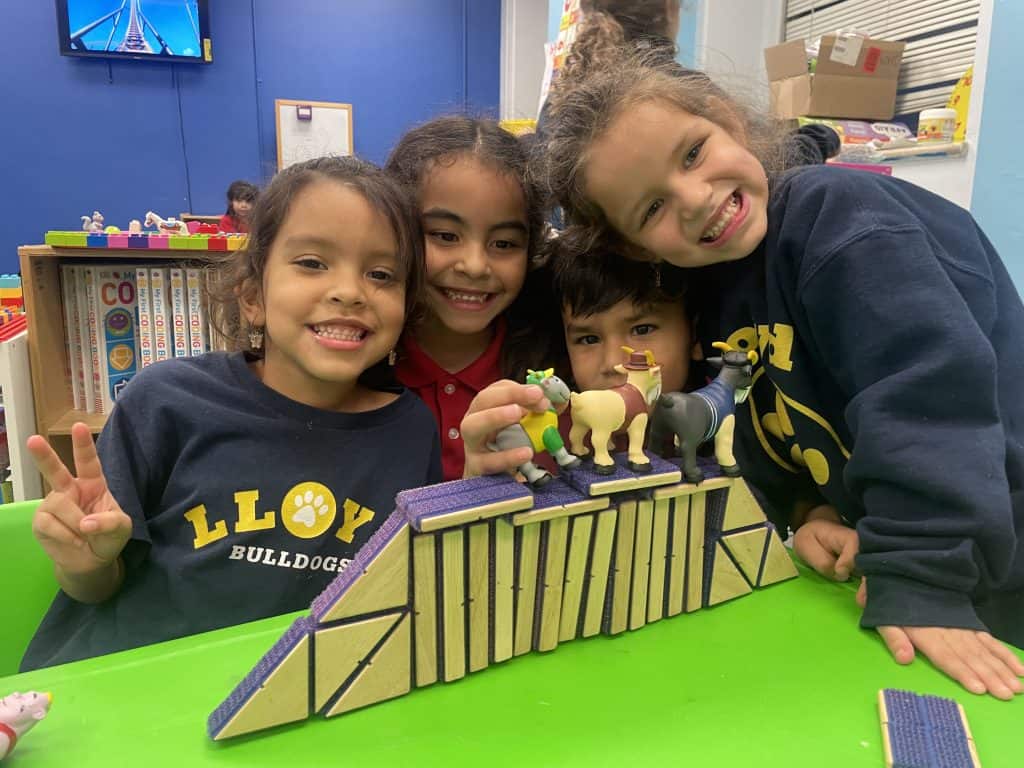
Students from Building Block Club (Kindergarten-2nd grade) pose for a photo after constructing a bridge as a group activity in the STEM Learning Center (SLC) at Bethel New Life in Austin. Photo by Maria Fernanda Avila for Project Exploration.
Belonging is also associated with increased interest in Science, Technology, Engineering, and Math (STEM) topics and greater STEM self-efficacy.
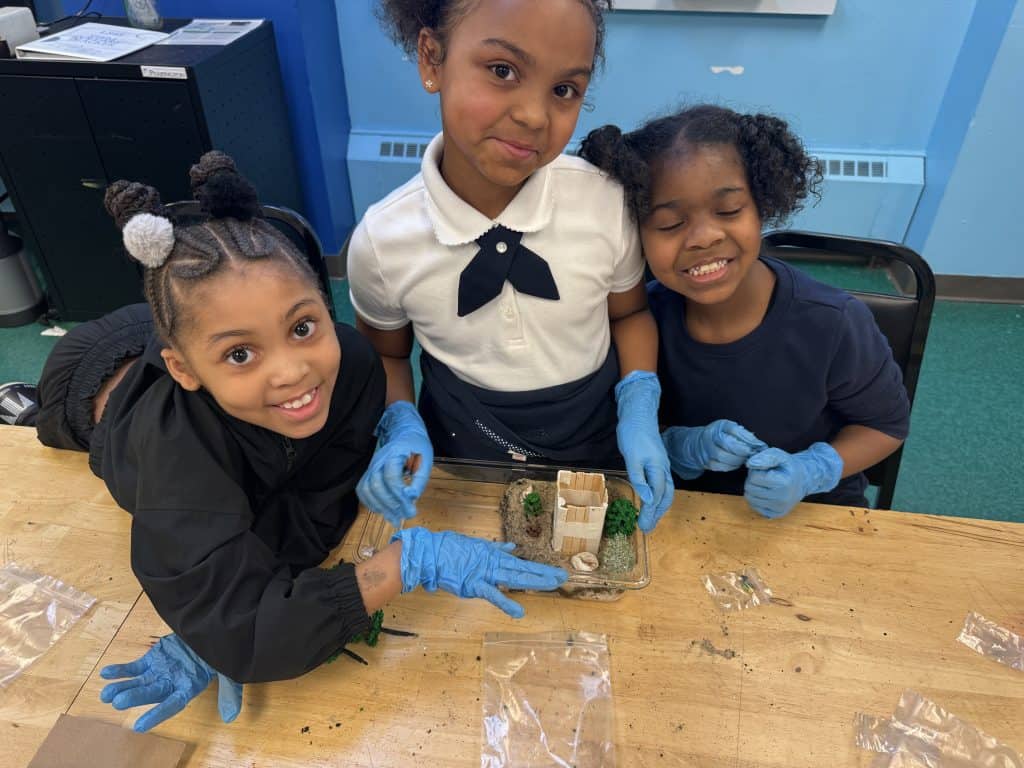
Students from Little Sisters4Science (LS4S) (3rd-5th grade) collaborate to create models to simulate a tsunami as part of an environmental engineering curriculum in spring 2025. Photo by Ben Cummings for Project Exploration.
“It’s very intentional that we’re doing it this way,” said Program Director Steven Willis. “We’re trying to create a journey for our young people.”
One of the ways that students grow closer among each other and with their facilitator is through the establishment of community norms, said Willis. This takes place in the first week of program, a segment titled “Building Relationships.”
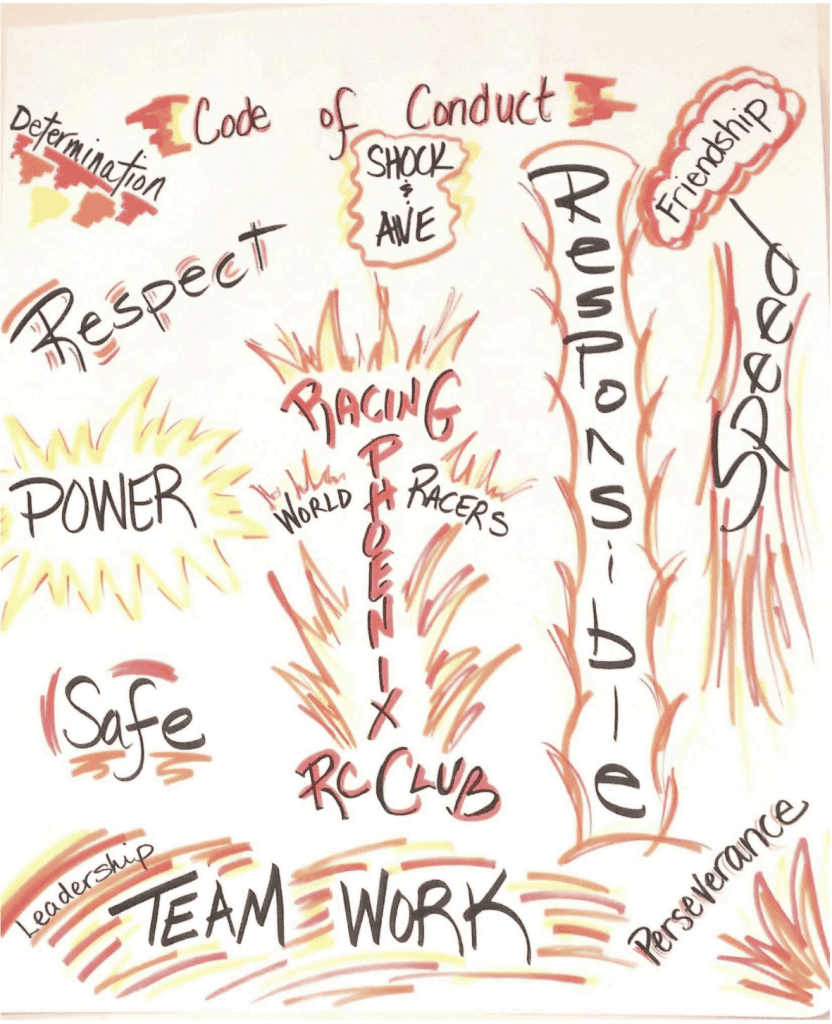
Example of a past Code of Conduct from 2016 used in training for facilitators this fall, where students were able to express themselves creatively to create collective norms. Photo by Project Exploration.
“I think that’s the piece that’s really going to bring out the efficacy and the interest in STEM, because there are definitely going to be challenges. And there are definitely going to be things that young people feel like that they failed at. But they need to have a strong enough relationship with a facilitator to be redirected—and they’ll say, ‘Hey, you feel bad about it, but let’s reflect on why it failed and what we could do better, and let’s try it again!’”
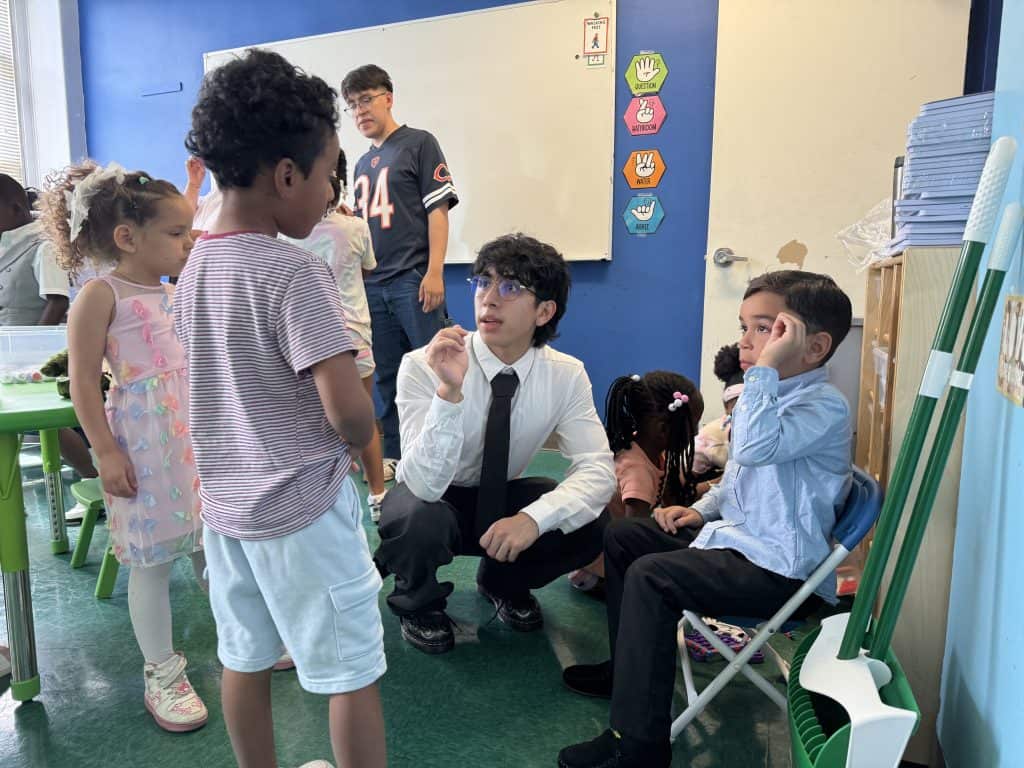
Adan Juarez (center), a STEAMbassador with Project Exploration helps resolve a conflict between two students in the Building Block Club (K-2) program this past summer. Photo by Benjamin Cummings Project Exploration.
Getting into the Data
Using statistically validated measures of STEM interests (two items; r = .46), STEM self-efficacy (two items; r = .55) and sense of belonging (5 items; McDonald’s ω = .82), we found that a student’s sense of belonging was significantly associated with their STEM interests (β = .59, p < .001) and STEM self-efficacy(β = .73, p < .001); even after taking into account the sex, race, site location, grade-level, and age of Project Exploration’s students.
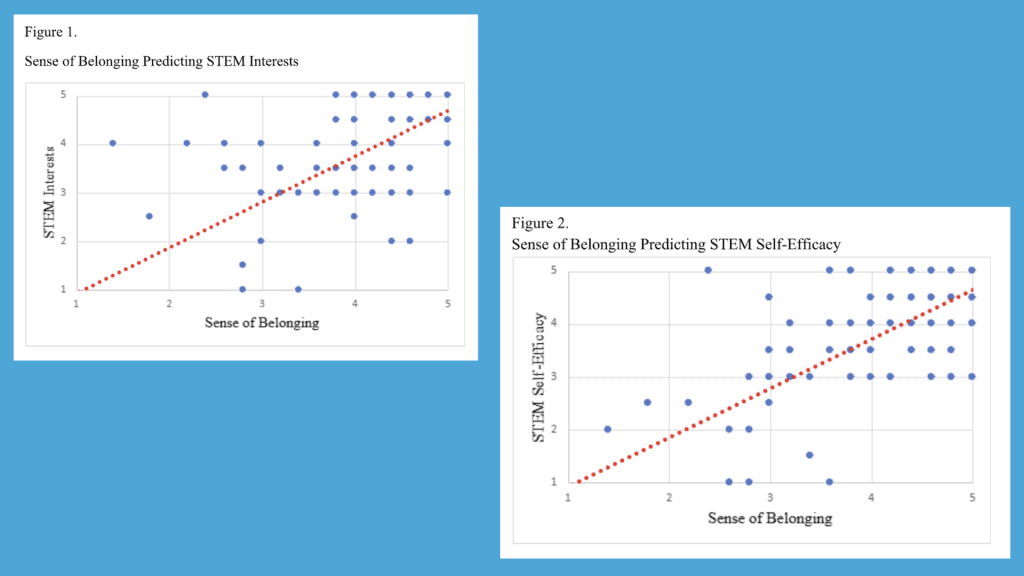
Spring 2025 Evaluation Report graphs. Left to right, Figure 1 depicts the positive trend between Sense of Belonging and STEM Interest and Figure 2 depicts the same trend for STEM Self-Efficacy. Figure by Miguel Angel Vazquez III.
These results indicate that the more a student feels like they belong in PE’s STEM programs, the more interested they may be in STEM and the more they may believe that they are good at and can complete STEM activities. They also underline the importance of creating an inclusive and welcoming learning environment in Project Exploration’s programs.
Putting Findings into Practice
Project Exploration (PE) programs are guided by a theory of change that highlights the importance of positive social connections and supportive learning environments as the foundation for building students’ interests and confidence in STEM.
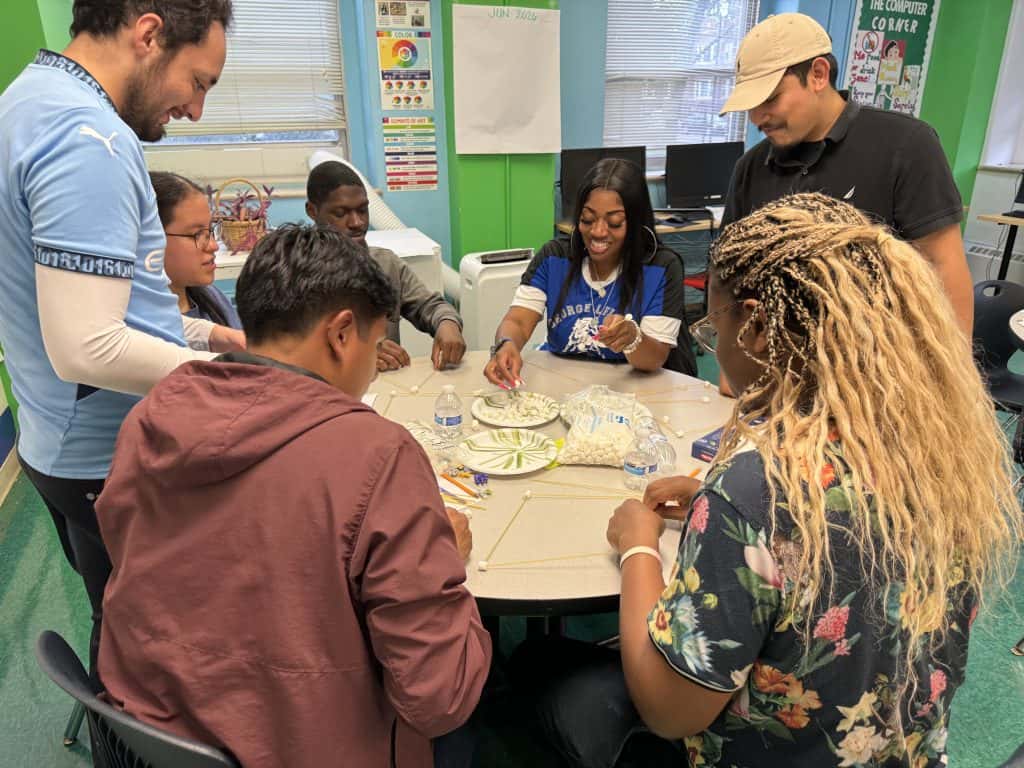
Last week, facilitators for Fall 2025 participated in group activities as part of training in order to learn and experience creating environments that facilitate belonging. Photo by Benjamin Cummings for Project Exploration.
The findings from above have been shared during PE’s instructor training sessions, where the program evaluator, program managers, and the program director emphasize to facilitators how important it is to ensure students feel valued and accepted in PE’s programs.
Site Coordinator for the STEM Learning Center (SLC) at Bethel New Life Sharon Williams is often the first person students see when they check in for a program, and has a special perception for when students feel comfortable, which she said allows them to fully express themselves.
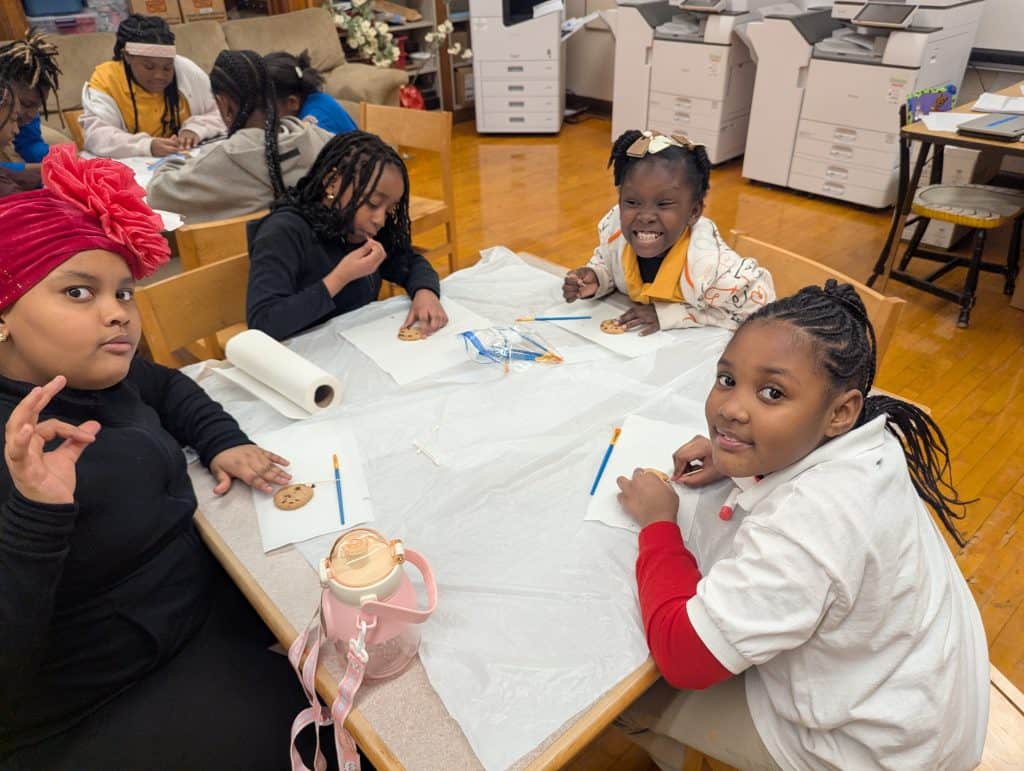
Students in the Spring 2025 Little Sisters4Science (3rd-5th grade) program conducting a cookie archaeology activity pose for a photo at John J Pershing STEAM Magnet School, spring 2025. Photo by Project Exploration.
“The more comfortable you make the kid feel, the more they’ll engage,” said Williams, who connects with both students and their parents when it’s time for pick-up. As the student, “It’s the warmth. It’s the love that you feel. You feel loved, you feel appreciated. You feel safe, secure. Because I’m feeling secure, I’m not gonna isolate or ridicule others. I can open up and be me.”
Edits and Contributions by Communications and Outreach Manager Benjamin Cummings.
Author Bio
Miguel Angel Vazquez III is the program evaluation manager at Project Exploration. He is currently pursuing a PhD in Community Psychology at DePaul University and is a passionate researcher who loves quantitative and qualitative methodologies. His main area of research focuses on intergroup relationships within the United States of America and program evaluation. If you would like to connect with Miguel, you may reach him at [email protected] or [email protected].
LinkedIn: https://www.linkedin.com/in/miguel-vazquez-47055632b/
References
Allen, K. A., Kern, M. L., Rozek, C. S., McInerney, D. M., & Slavich, G. M. (2021). Belonging: A review of conceptual issues, an integrative framework, and directions for future research. Australian journal of psychology, 73(1), 87-102. https://doi.org/10.1080/00049530.2021.1883409
Baumeister, R. F., & Leary, M. R. (1995). The need to belong: Desire for interpersonal attachments as a fundamental human motivation. Psychological Bulletin, 117(3), 497-529. http://dx.doi.org/10.1037/0033-2909.117.3.497
Fong, C. J., Adelugba, S. F., Garza, M., Pinto, G. L., Gonzales, C., Zarei, P., & Rozek, C. S. (2024). A scoping review of the associations between sense of belonging and academic outcomes in postsecondary education. Educational Psychology Review, 36(4), 138. https://doi.org/10.1007/s10648-024-09974-y
Hansen, M. J., Palakal, M. J., & White, L. J. (2024). The importance of STEM sense of belonging and academic hope in enhancing persistence for low-income, underrepresented STEM students. Journal for STEM Education Research, 7(2), 155-180. https://doi.org/10.1007/s41979-023-00096-8
Xu, C., & Lastrapes, R. E. (2022). Impact of STEM sense of belonging on career interest: The role of STEM attitudes. Journal of Career Development, 49(6), 1215-1229. https://doi.org/10.1177/08948453211033025
